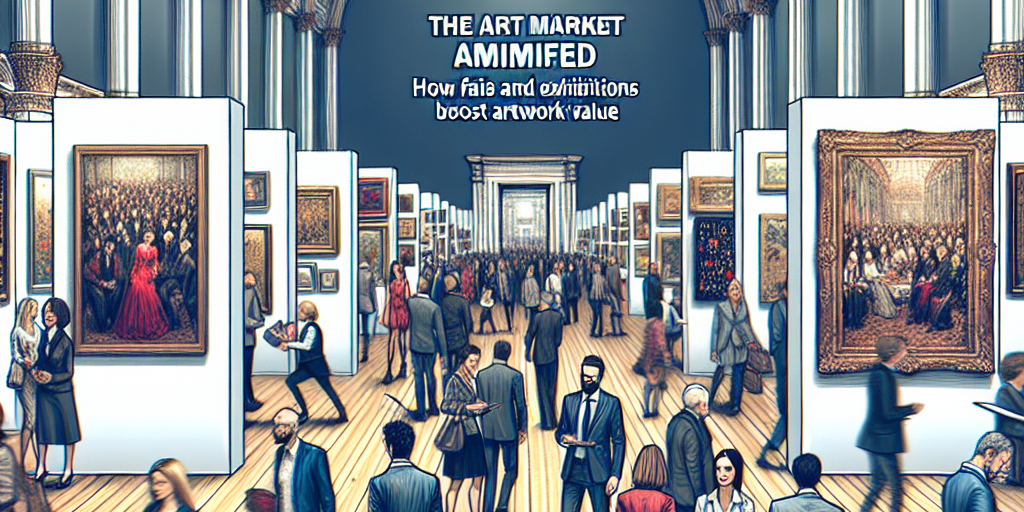The Art Market Amplified: How Fairs and Exhibitions Boost Artwork Value
In the bustling world of art, where creativity meets commerce, the significance of art fairs and exhibitions cannot be understated. These platforms offer artists and collectors a fertile ground to showcase and discover new works, and they play a pivotal role in amplifying the value of artworks. From New York to Hong Kong, art fairs and exhibitions serve as the backbone of the global art market, driving trends, creating opportunities, and establishing the worth of both emerging and established artists.
Catalysts for Visibility and Recognition
Art fairs and exhibitions are unrivaled in their ability to provide visibility. They attract a diverse audience, including collectors, curators, critics, and the general public, creating a melting pot of perspectives and potential opportunities. For emerging artists, a spot at a renowned fair can act as a springboard into the global spotlight. For established artists, maintaining a presence in these events reaffirms their relevance and appeal in the ever-evolving art world.
Exhibitions are curated experiences, meticulously organized to weave narratives that engage viewers. When executed successfully, they draw attention to artworks, creating conversations and encouraging critical acclaim. These factors contribute significantly to an artist’s career, influencing the perceived value of their work in both cultural and financial contexts.
Market Dynamics and Economic Impact
Art fairs generate a unique economic microcosm that affects artwork value in multiple ways. The concentration of galleries, artists, and buyers under one roof allows for real-time networking and transactions, often leading to immediate sales and commissions. In such environments, the competitive nature of the art market is palpable. Scarcity and demand come into sharp focus, driving prices and setting new benchmarks for future valuations.
Moreover, fairs and exhibitions often serve as trendsetters, reflecting and defining the zeitgeist of the art world. The themes and artists that dominate these platforms influence market dynamics and set collectors’ priorities for the following months and years. This ripple effect can raise the profile and value of the artworks and artists that align with current and emerging trends.
The Role of Technology and Globalization
Recent technological advancements and globalization have further amplified the reach and impact of art fairs and exhibitions. With virtual reality, live streaming, and online viewing rooms, the barriers to accessing these events have diminished. Now, artists and galleries can reach a global audience, expanding their market and increasing potential value.
Furthermore, the globalization of the art market means collectors from different cultural and economic backgrounds come together, bringing diverse valuation standards and buying power. This diversity introduces new elements into the pricing equation, often elevating the worth of artworks beyond traditional expectations.
Cultural Validation and Endorsement
Exhibitions and fairs also contribute to the cultural validation of art. Being included in a prestigious event often is seen as an endorsement of an artist’s work and worth. The curatorial decisions that bring certain artists and pieces to the forefront lend a level of credibility and value in the eyes of collectors and the public.
Conclusion
Art fairs and exhibitions are more than mere events; they are dynamic arenas where the art market’s movements are often choreographed and performed. They serve as catalysts for careers, market trends, and the financial appreciation of art. In a landscape where success can be as ephemeral as a brushstroke, these platforms provide a stage on which the value of art is amplified, not just in economic terms but in cultural significance as well.
As the art world continues to evolve, the role of fairs and exhibitions in shaping the fortunes of artists and their work remains as significant as ever, promising to propel the market forward into new, uncharted territories.







